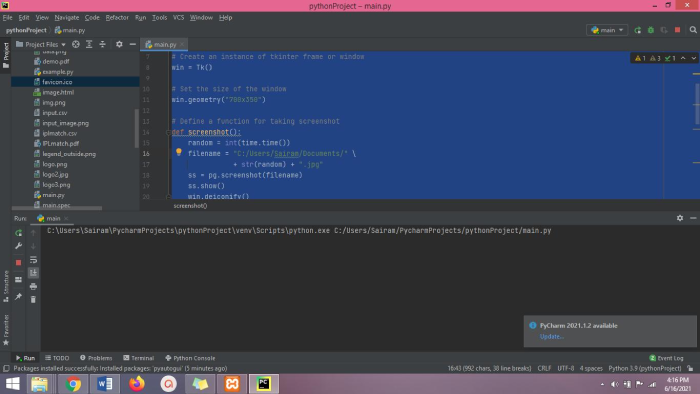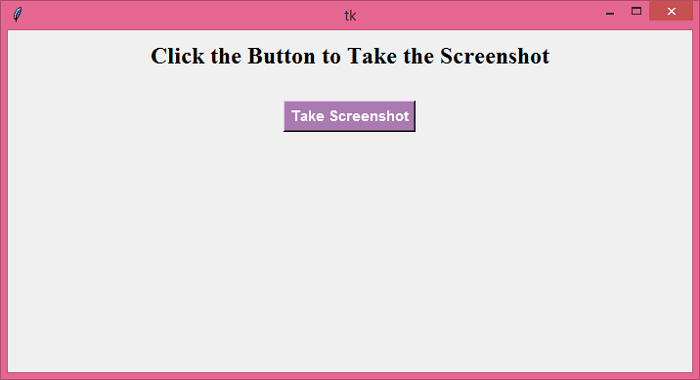如何使用Python(Tkinter)擷取視窗截圖?
Python擁有豐富的模組和函式庫,允許我們構建和開發功能強大的應用程式。Tkinter是一個著名的Python庫,用於建立基於GUI的應用程式。如果我們想開發一個擷取視窗截圖的應用程式,我們肯定可以使用Tkinter來構建應用程式的GUI。以下應用程式的步驟將有助於瞭解我們的應用程式是如何工作的:
**所需庫** – Pillow(PIL)用於影像處理,Python中的Time模組用於隨機化檔名和週期處理。
在視窗中建立一個標籤小部件,並新增一個按鈕來擷取螢幕截圖。
定義一個函式,**screenshot()**,它將擷取視窗的螢幕截圖並將檔案儲存在本地目錄中。
為了防止Tkinter視窗也被擷取到圖片中,我們可以使用**withdraw()**函式來隱藏視窗。
示例
# Import the required libraries
from tkinter import *
import time
from PIL import ImageTk, Image
import pyautogui as pg
# Create an instance of tkinter frame or window
win = Tk()
# Set the size of the window
win.geometry("700x350")
# Define a function for taking screenshot
def screenshot():
random = int(time.time())
filename = "C:/Users/Sairam/Documents/" \ + str(random) + ".jpg"
ss = pg.screenshot(filename)
ss.show()
win.deiconify()
def hide_window():
# hiding the tkinter window while taking the screenshot
win.withdraw()
win.after(1000, screenshot)
# Add a Label widget
Label(win, text="Click the Button to Take the Screenshot", font=('Times New Roman', 18, 'bold')).pack(pady=10)
# Create a Button to take the screenshots
button = Button(win, text="Take Screenshot", font=('Aerial 11 bold'), background="#aa7bb1", foreground="white", command=hide_window)
button.pack(pady=20)
win.mainloop()輸出
執行以上程式碼將顯示一個包含按鈕和標籤文字的視窗。
當我們單擊按鈕時,它將擷取視窗的螢幕截圖並將其儲存在本地目錄中。


廣告

 資料結構
資料結構 網路
網路 關係資料庫管理系統 (RDBMS)
關係資料庫管理系統 (RDBMS) 作業系統
作業系統 Java
Java iOS
iOS HTML
HTML CSS
CSS Android
Android Python
Python C語言程式設計
C語言程式設計 C++
C++ C#
C# MongoDB
MongoDB MySQL
MySQL Javascript
Javascript PHP
PHP
